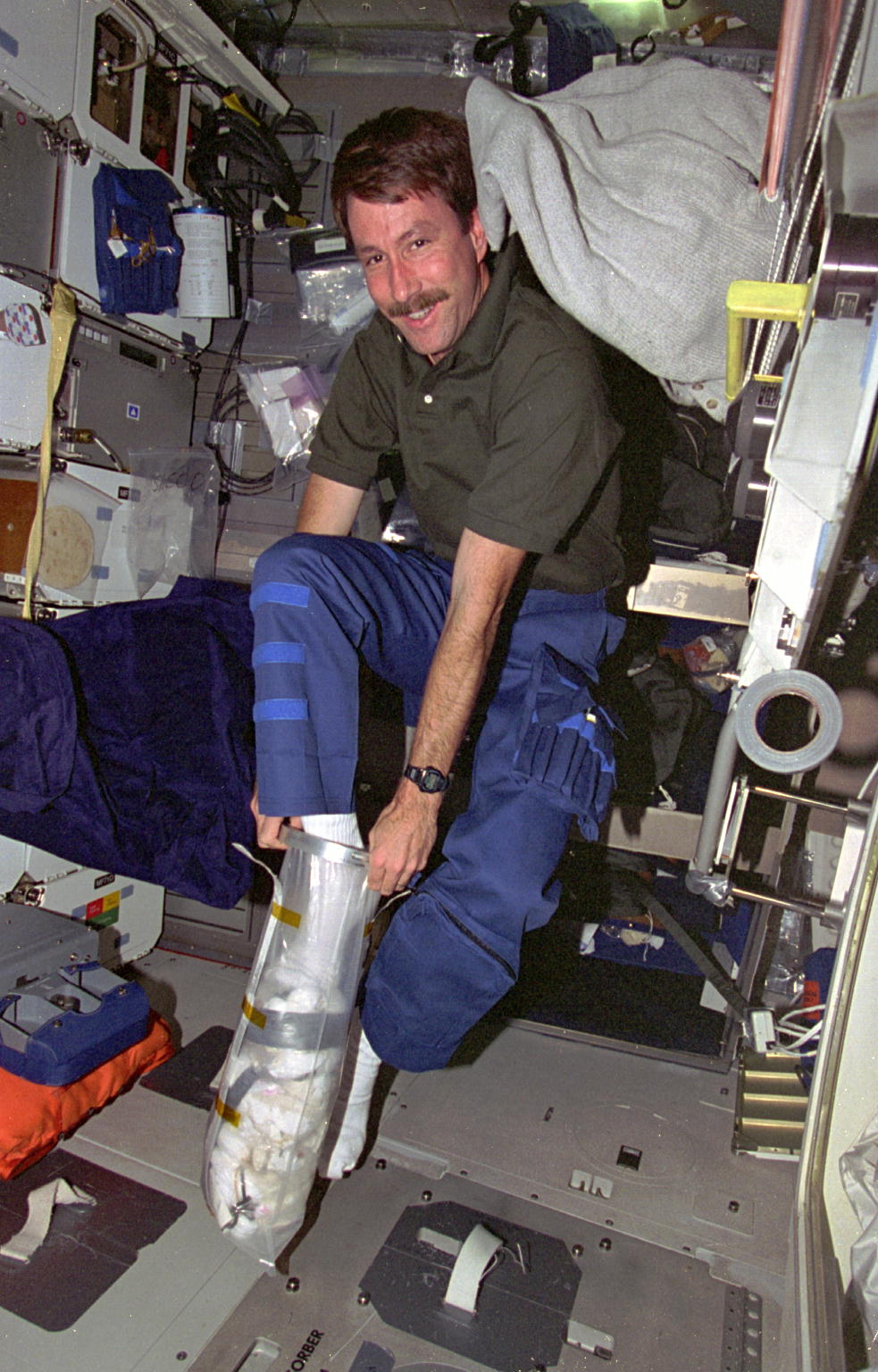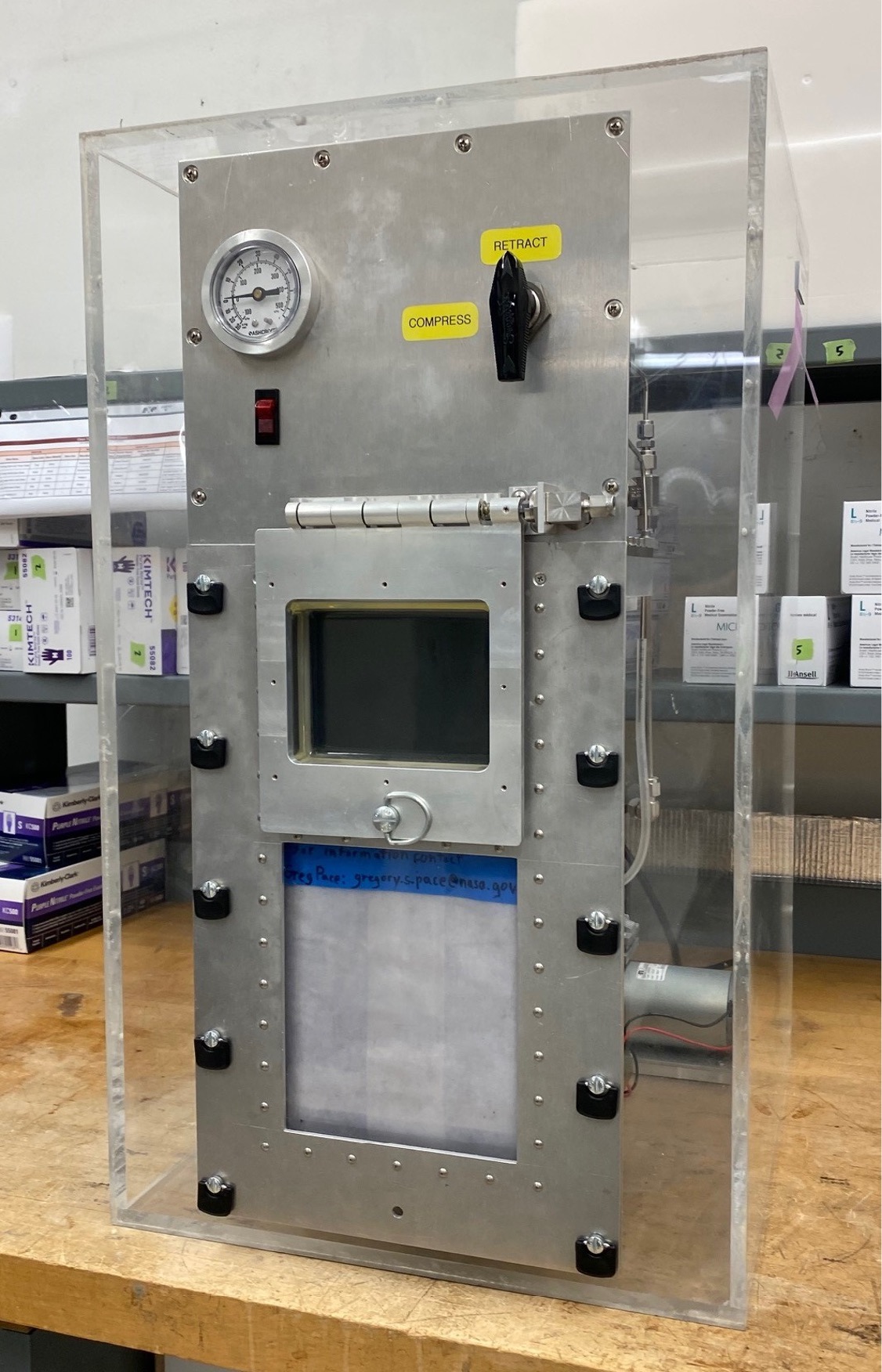NASA Mechanical Compactor Development
NASA is currently evaluating the use of electrically powered mechanical compactors as a means of high-efficiency trash volume reduction. The current method of trash compaction in space it relatively primitive. The astronaut squeezes the trash into a plastic bag then closes and raps the bag in duct tape so that it will stay compacted when the pressure is relieved from the trash. The duct-taped bags of trash are termed “footballs”.
The trash football method of compaction typically produces a volume reduction of 2 to 1 with the initial uncompacted trash density being approximately 70 grams per liter and the final compacted density being approximately 140 grams per liter. A powered compactor, on the other hand, can achieve volume reductions of 4 to 1 or greater with the final compacted trash density equaling 280 grams per liter or more, providing double the effectiveness of the trash football compaction method.
In addition to achieving a higher compaction ratio than the trash football method, the powered mechanical compactor can reduce the crew time associated with trash compaction.
A powered mechanical trash compactor was developed in 2006 for the NASA Constellation Program which was aimed at returning to the moon. The device was designed to work in the Crew Exploration Vehicle (CEV) portion of the lunar transit vehicle designed to take the astronauts to the moon and back. The total flight time was 11 days. The compactor was sized to require two bags, one for the trip to the moon and another for the return trip from the moon. The first bag would receive all of the trash from the transit to the moon and then be discarded into the lunar ascent vehicle when it returns to the transit vehicle from the lunar surface. The second bag is then placed into the compactor and removed after the spacecraft returns to earth.
The compactor bags were specially designed for use in micro-gravity and an enclosed spacecraft environment. Unlike operation of a compactor on the ground, use of a compactor (or any other waste management device) requires special attention to keeping liquid and particulate matter from floating away from the trash and into the spacecraft environment, as this can pose an inhalation hazard to the crew.
The powered mechanical compactor uses a custom designed pneumatic actuator that was designed to use a free 20 psi source of nitrogen available on the CEV.
Current work at NASA Ames Research Center
The powered mechanical compactor prototype is currently being evaluated for potential missions to Mars. The missions to Mars will be much longer than the lunar missions that the powered mechanical compactor was designed for. Testing using the powered mechanical compactor prototype will be performed at the NASA Ames Research Center. The tests will be used to evaluate the performance of the system using the latest trash models, which are different than those that the compactor was originally designed for.
The data from the tests will be utilized to develop a follow-on compactor that is specifically designed for currently proposed missions.
[1] Pace, G.S., Fisher, J.W., “Compaction Technologies for Near and Far Term Space Missions”, Technical paper 2006-01-2186, 36th International Conference on Environmental Systems, 2006.
































